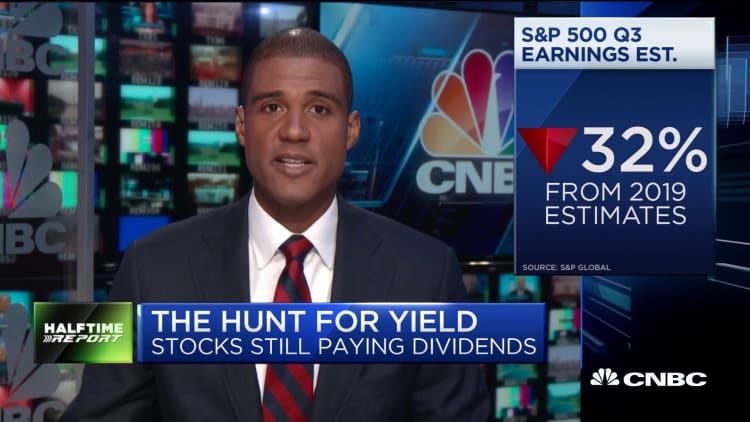If you count on dividends to deliver income in retirement, you might want to temper your expectations.
Wells Fargo this week joined the list of 773 publicly traded companies — 63 of them on the S&P 500 index — whose dividends are being reduced or suspended. While you may not have seen much change in income in the first half of the year due to the lag between an announced dividend and when you receive it (or notice its absence), the next six months may bring disappointment.
"The second half of the year won't be too good," said Howard Silverblatt, senior index analyst with S&P Dow Jones Indices, which keeps tabs on dividend actions by publicly traded common stock with a market capitalization of $25 million or more.
More from Personal Finance:
Small businesses rehire staff but cut pay and hours
Treasury canceling stimulus checks to dead recipients
Coronavirus unemployment claims are worst in history
Dividend-yielding stocks generally reward long-term investors, typically paying them quarterly from the company's profits. For retirees fearful of depleting their savings, this can offer a regular income stream without having to sell assets.
While not all stocks have slashed or suspended dividends — at least 972 either increased or initiated them this year — relying solely on those payments for income may be missing the bigger picture.
"Investors may have to shift their mindset about what it means to generate income from their portfolios," said certified financial planner Adam Reinert, chief investment officer with Marshall Financial Group in Doylestown, Pennsylvania.
"If you think about what income means, is it really just dividends and [bond payments], or is it cash flow from the portfolio as a whole?" he said.
In other words, Reinert said, think of dividends, interest and growth of assets as the building blocks of an income stream. That way, he said, you can reduce some risk that comes with too heavy a focus on those income yields (payments as a share of the asset price). The average yield on dividends overall has been about 2% per year.
"If you just focus on dividends or coupon payments, you might see something with a higher yield, say 6%, but it could be riskier," Reinert said. "Maybe the price is falling, or the dividend hasn't been adjusted yet."
Investors may have to shift their mindset about what it means to generate income from their portfolios.Adam Reinertchief investment officer at Marshall Financial Group
Retirees also could use the bucket approach — using fixed-income investments, such as U.S. Treasury bonds — to plan for income over a multi-year period.
"You effectively cover your living expenses for five or seven or 10 years by buying the appropriate fixed-income investments to match that time horizon," said CFP Michael Hennessy, founder and CEO of Harbor Crest Wealth Advisors in Fort Lauderdale, Florida. "Then, the remaining funds in your retirement account can be invested to capture long-term equity growth."
It also may be worthwhile upgrading your dividend stock holdings by replacing companies with weaker balance sheets — and more at risk of cutting dividends — with those whose financials suggest they are in better shape to continue paying, said Shon Anderson, a CFP and president of Anderson Financial Strategies in Dayton, Ohio. Some companies have consistently paid dividends for 25 years, or even 50 years or more, he said.

"The company board of directors, and executive management, know that a growing dividend is extremely important to the majority of their shareholders and will protect it at all costs, even if it isn't necessarily the optimum short-term solution," Anderson said.
Even if a company cuts or suspends its dividend, it may resume or increase them once its finances are stronger.
"They're likely to bring them back," Anderson said. "But the reason they've had to reduce them is distress in their business, so it probably won't be in the near future."
Silverblatt at S&P Dow Jones Indices anticipates further dividend cuts to be more prevalent among smaller and mid-sized public companies as the economy struggles to right itself.
"I expect those companies to feel it the most," Silverblatt said.


